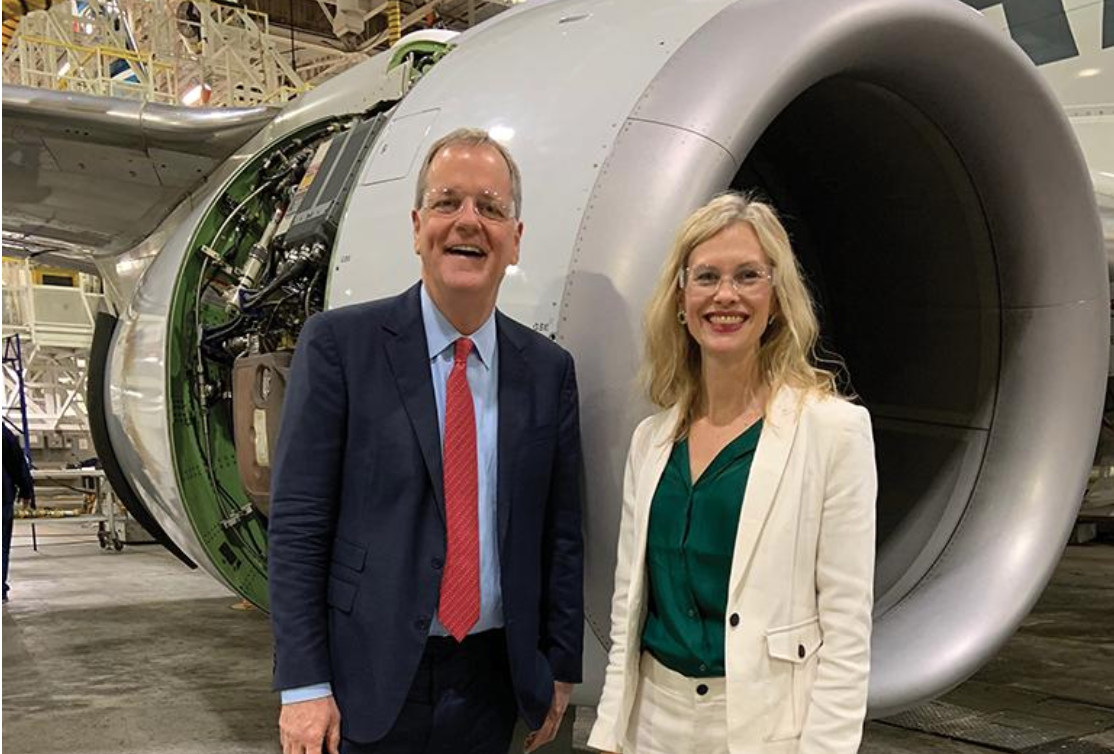MRO 25周年の裏側

25年前、その後の航空機アフターマーケット業界を一変させる出来事が起きた。
3人の人間が航空業界における変化に気付き、その力を利用しようというビジョンを持ち、そして1人がそれを実現させた。この時、「MRO(Maintenance・Repair・Overhaul)」という言葉が誕生した。これは今日の航空機アフターマーケット業界の代名詞であり、同時にAviation Weekの定期イベントにもなっている。
Aviation Week Network社長のGreg Hamilton はこう語る。「ダラスで開催された初めてのカンファレンス『MRO’96』は、3人による熱狂的な打ち合わせとブレインストーミングの中で生まれた。Aviation Weekの出版者・Ken Gazzola 、Aviation Weekの編集長・Don Finkと、Canaan Groupの社長・George Ebbs…同社はMROアウトソーシングの拡大と、現代的なサプライチェーン構築の先駆者だ。そしてLydia Janowが、当時の小さなAviation Weekカンファレンス担当チームを率いて、トレードショー運営に必要な専門性を発揮。初めてのMROイベントを実現させ、今日まで開催を続けてきた」
MRO ’96は3月10日から12日にかけて、ダラスにあるフェアモントホテルのボールルームで開催された。この時、Janowは25の出展社と350名の出席者を見込んで予算を組んだ。「終わってみれば、70の出展社(キャンセル待ちも発生)と500人以上の出席があった」とJanowは振り返る。カンファレンスエリアと展示スペースを仕切るカーテンでは、出展者が設営作業に使った掃除機の音をかき消すことはできなかったが、イベント自体は大成功といえた(その後、このような状況は改善した)。
Gazzolaは、フォートワースにあるアライアンス空港の開港を一族が主導した、Ross Perot Jr.氏にサポートを求めた。その結果、MRO’96ではアメリカン航空の整備拠点でもあるこの新空港の見学ツアー が実現し、出席者はPerot’s Circle T牧場での盛大なテキサスバーベキューに参加することもできた。
このイベントでは、「整備のアウトソーシングと在庫削減による、航空会社のコスト削減」というテーマが大きな注目を集めた。当時、航空会社は”コアコンピタンス”への注力を強いられており、それ以外の領域はサプライヤーにシフトするよう求められつつあった。ユナイテッド航空の整備事業を担当するUAL Servicesの社長・Stephan Regulinski氏は、会社にとって高付加価値といえないような整備はアウトソースすべきと提唱したが、「ユナイテッド航空の社内規則上、20%以上の整備作業をアウトソースすることは制限されている」と述べたことが、当時の本誌記事に記載されている。
ボーイング社の社長・Philip Condit氏は、航空会社とMRO事業者に対して、この新しい世界を探索するための「相互対話」の実施と継続を促した。
また、エンジンメーカーの根本的なビジネスモデルもプレッシャーに晒されていた。エンジンの信頼性向上に伴って必要数は減少し、顧客はコスト保証とより良いサービスを求めるようになった。ロールスロイス社の登壇者は、スペアパーツの価格高騰がエンジン販売の障害になっていると指摘した。同社はアフターマーケットへの新規参入を極めて難しくすることを促していた。
1996年のOverhaul & Maintenance誌(1995年に創刊された、本誌の当時の名称)は、2000年までにMROマーケットは600億ドルに拡大すると予想した。コロナ危機以前、本誌は2020年の民間機向けMROマーケットは912億ドルと予想していたが、今ではそれよりも20~30%ほど少なくなっている。
とはいえ、この落ち込みがあったとしても、これは巨大で動きの激しいマーケットだ。そして、これからも粘り強く成長していくだろう。この25周年を祝うと同時に、ここまで共に作り上げていただいた皆様に御礼申し上げます。
以上は、Lee Ann ShayがInside MRO誌いた記事です。 Inside MRO誌は、民間航空機MROセクターの最新のトレンドとテクノロジーを調査しています。毎月の各号には、重要なテクノロジー、ビジネス、および運用上の意思決定に必要な情報が記載されています。さらに、加入者は月に1回発行されるAviation Week&Space Technologyを受け取ることができます。Inside MRO誌をもっと知りたい場合、こちらをクリックして下さい。
Twenty-five years ago, an event happened that would forever change the aviation aftermarket industry.
Three people saw a change coming in the airline industry and had a vision to harness the power of what they saw—and one made it happen. It was the birth of MRO—the acronym synonymous with today’s aviation aftermarket, as well as the Aviation Week event series.
“The name and the first conference [MRO ’96] in Dallas were hatched in a frenzy of meetings and brainstorming sessions headed by Ken Gazzola, Aviation Week’s publisher; Don Fink, Aviation Week editor-in-chief; George Ebbs, president of the Canaan Group, a consulting firm that pioneered the expansion of MRO outsourcing and its modern supply chain; and Lydia Janow, who led the small Aviation Week conference unit at the time and provided the tradeshow executional expertise to produce the first MRO event . . . and every MRO thereafter, continuing to this day,” says Greg Hamilton, Aviation Week Network president.
MRO ’96 was held in Dallas on March 10-12 at the Fairmont Hotel’s ballroom. Janow budgeted for 25 exhibitors and 350 conference attendees. “We ended up with 70 exhibitors [and a waiting list] and more than 500 conference attendees,” she says. Although the curtain separating the conference and exhibition spaces did not drown out vacuuming underway during exhibitor setup, the conference was considered a big success. (We’ve improved details such as that since then.)
Gazzola had contacted Ross Perot, Jr., whose family led the establishment of Alliance Airport in Fort Worth, for his support. That entailed MRO ’96 attendees touring the new airport, which was home to an American Airlines maintenance facility, and attending a spectacular Texas barbeque at Perot’s Circle T Ranch.
At MRO ’96, the theme of airlines needing to cut costs—by outsourcing maintenance and reducing inventories—was the hot topic. Airlines were being pressured to focus on their “core competencies” and shift other elements to suppliers. Stephan Regulinski, president of UAL Services for United Airlines, advocated outsourcing any maintenance that was not of a “value-added nature” for the carrier, but he cautioned, “United’s employee ownership plan limits the airline from outsourcing more than 20% of maintenance work,” according to an Aviation Week article about MRO ’96.
Boeing President Philip Condit urged airlines and MROs to establish and sustain a “mutual dialog” with each to navigate this new world.
Engine OEM business fundamentals also were under pressure: Increased engine reliability decreased the number of powerplants needed, customers wanted cost guarantees and better service, and a Rolls-Royce speaker cited rising spares costs that were suppressing engine sales. This was prompting Rolls to “make it very difficult” for new entrants to get into its aftermarket.
In 1996, Overhaul & Maintenance, the original name of this magazine that launched in 1995, pegged the MRO market to climb to $60 billion by the year 2000. Before the COVID-19 pandemic, Aviation Week was forecasting the 2020 commercial aviation MRO market dollar demand to be worth $91.2 billion, but now the forecast is 20-30% less.
Even with this drop, it’s a big, dynamic market—and one that will continue to evolve and persevere. Happy 25th anniversary, and thank you for being part of it.